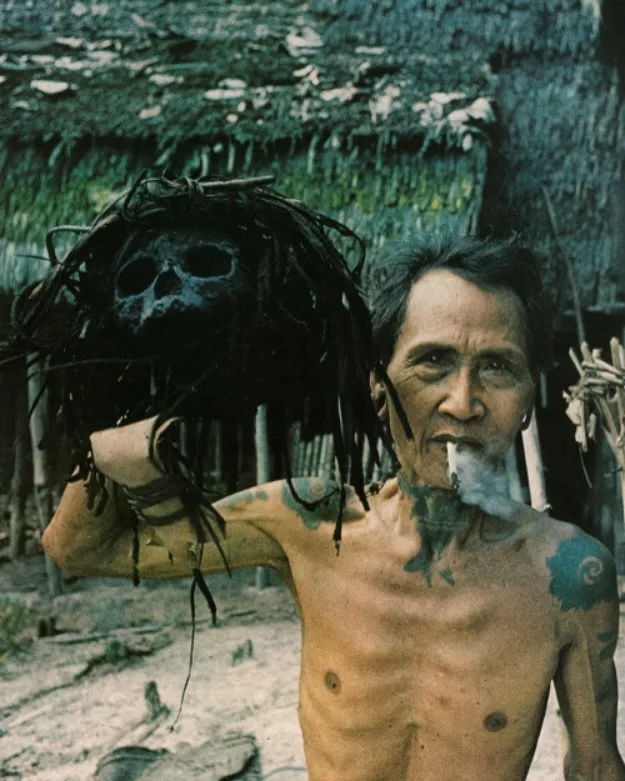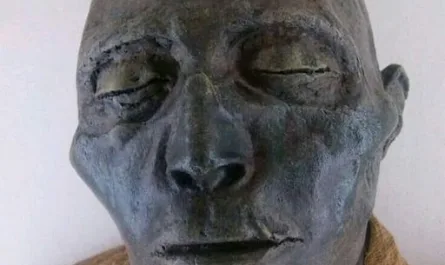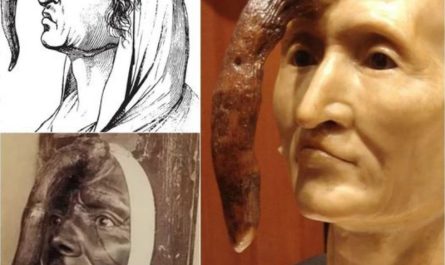The Iban people, part of the broader Dayak ethnic group in Sarawak, Malaysia, are renowned for their rich cultural heritage and fierce warrior traditions. Among these, headhunting—known as ngayau in the Iban language—stands out as a practice steeped in spiritual and social significance. By 1977, however, this once-vital ritual had largely vanished, replaced by modernization and new beliefs. Yet, the idea of an Iban elder displaying a taken enemy head in 1977 sparks curiosity: was this a lingering echo of a warrior past or a ceremonial nod to tradition? Let’s explore the historical context and what such an act might have meant.

The Legacy of Iban Headhunting
For centuries, headhunting was a cornerstone of Iban culture. Far from mere violence, it was a sacred act tied to animistic beliefs. The heads of enemies were thought to house powerful spirits that could bring prosperity, protect communities, and ensure fertile harvests. Taking a head was also a mark of bravery, elevating a warrior’s status within the longhouse. War leaders, known as tuai serang or raja berani, gained prestige through their success in ngayau, and trophy skulls were proudly displayed during festivals like Gawai, a harvest celebration.
Headhunting served practical purposes too. It was often linked to territorial expansion, settling disputes, or ensuring the land’s fertility before planting rice. The skulls, carefully preserved, were treated as sacred objects, hung on longhouse verandas or used in rituals to honor ancestral spirits.
The Decline of a Tradition
By the 19th century, headhunting began to wane under European colonial rule. In Sarawak, the Brooke administration, led by the “White Rajahs,” cracked down on piracy and intertribal warfare, curbing the practice. After World War II, headhunting saw a brief resurgence when Allied forces encouraged the Iban to target Japanese soldiers, but this was an exception. By the mid-20th century, most Iban communities had embraced Christianity or Islam, and modern education, legal systems, and economic shifts—such as work in logging or plantations—further eroded traditional practices.
By 1977, active headhunting was a thing of the past. The Iban were navigating a rapidly changing world, with many leaving longhouses for urban centers. Yet, the cultural memory of headhunting lingered, preserved in stories, rituals, and the occasional display of ancestral skulls.
Displaying a Head in 1977: Ritual or Relic?
The notion of an Iban elder displaying a taken enemy head in 1977 likely points to a ceremonial act rather than a fresh act of headhunting. By this time, trophy skulls from earlier conflicts—perhaps from the 19th century or World War II—were still kept in some longhouses as sacred relics. These might have been shown during cultural events like Gawai Dayak (the harvest festival) or Gawai Antu (the Festival of the Dead), where traditions were showcased to honor heritage and educate younger generations.
For example, in Brunei, it was noted that the head of a Japanese soldier from the 1940s was occasionally displayed as a historical artifact. Similarly, an Iban elder in 1977 might have presented a skull to guests, anthropologists, or during a festival to demonstrate the community’s proud warrior past. Such displays were less about violence and more about cultural preservation in a time when modernization threatened to erase old ways.
Cultural Sensitivity and Preservation
The display of human remains, even as cultural artifacts, is a sensitive topic today. In 1977, many Iban elders were grappling with the loss of traditional practices as Christianity and urban lifestyles took hold. Showing a trophy skull could have been a defiant act of pride, a way to assert identity in a changing world. However, it also raises questions about how such practices are viewed through a modern lens, where respect for human remains and cultural ethics are paramount.
A Window into History
While no specific record confirms an Iban elder displaying a head in 1977, the scenario aligns with the broader context of Iban cultural life at the time. It reflects a community in transition, balancing pride in their warrior heritage with the demands of a modern world. For those intrigued by this topic, ethnographic studies, such as those by Charles Hose, or modern accounts of Iban culture offer deeper insights. Museums like the Wellcome Collection, which holds early 20th-century photographs of Iban practices, also provide a glimpse into this fascinating history.
The story of the Iban and their headhunting past is a reminder of how traditions evolve, adapt, or fade in the face of change. In 1977, an elder holding up a trophy skull wasn’t just showing a relic—it was a powerful act of remembering who the Iban once were, and perhaps, who they still are.
Interested in learning more about Iban culture or other indigenous traditions? Share your thoughts or questions below!





